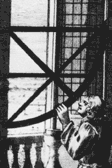Scientific
 In 1772, Johann Bode noticed that a planet appeared to be missing
because careful mathematical calculations showed that all the planets
were regularly spaced, except for one area. There was a large and
unexplainable gap between Mars and Jupiter, hence indicating that there
should be another planet in the area. In reality, there was none and
by the late 1700s, astronomers were searching for why such a gap
existed without the presence of a planet.
In 1772, Johann Bode noticed that a planet appeared to be missing
because careful mathematical calculations showed that all the planets
were regularly spaced, except for one area. There was a large and
unexplainable gap between Mars and Jupiter, hence indicating that there
should be another planet in the area. In reality, there was none and
by the late 1700s, astronomers were searching for why such a gap
existed without the presence of a planet.
In 1801, Giuseppi Piazzi, a Sicilian astronomer, discovered that
within this gap, there was a small planet. This small planet was
later known to be an asteroid and was named Ceres. This was the first
asteroid ever to be discovered by mankind which lead to more similar
discoveries in the area. Pallas (found in 1802), Juno (found in 1804)
and Vesta (found in 1807) are some of the asteroids that were later discovered
to be in orbit between Mars and Jupiter.
The discovery of these asteroids later gave way to today's asteroid belt that replaces the once unexplainable void. This belt contains thousands of asteroids that orbit between the two planets. With so many asteroids in this region, they create a gravitational field that would indicate the reason for a "gap" between Jupiter and Mars.
Therefore, Johann Bode's discovery lead to the understanding of our solar system and the effects that asteroids play in the universe.
Return to top


